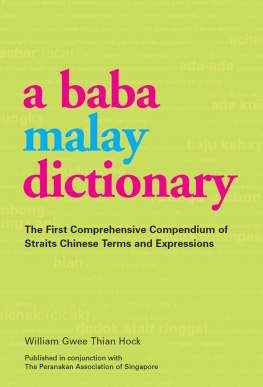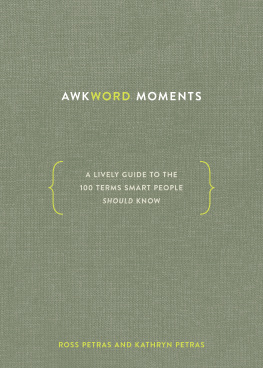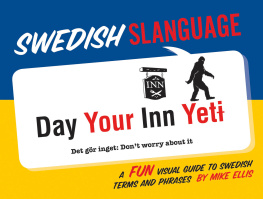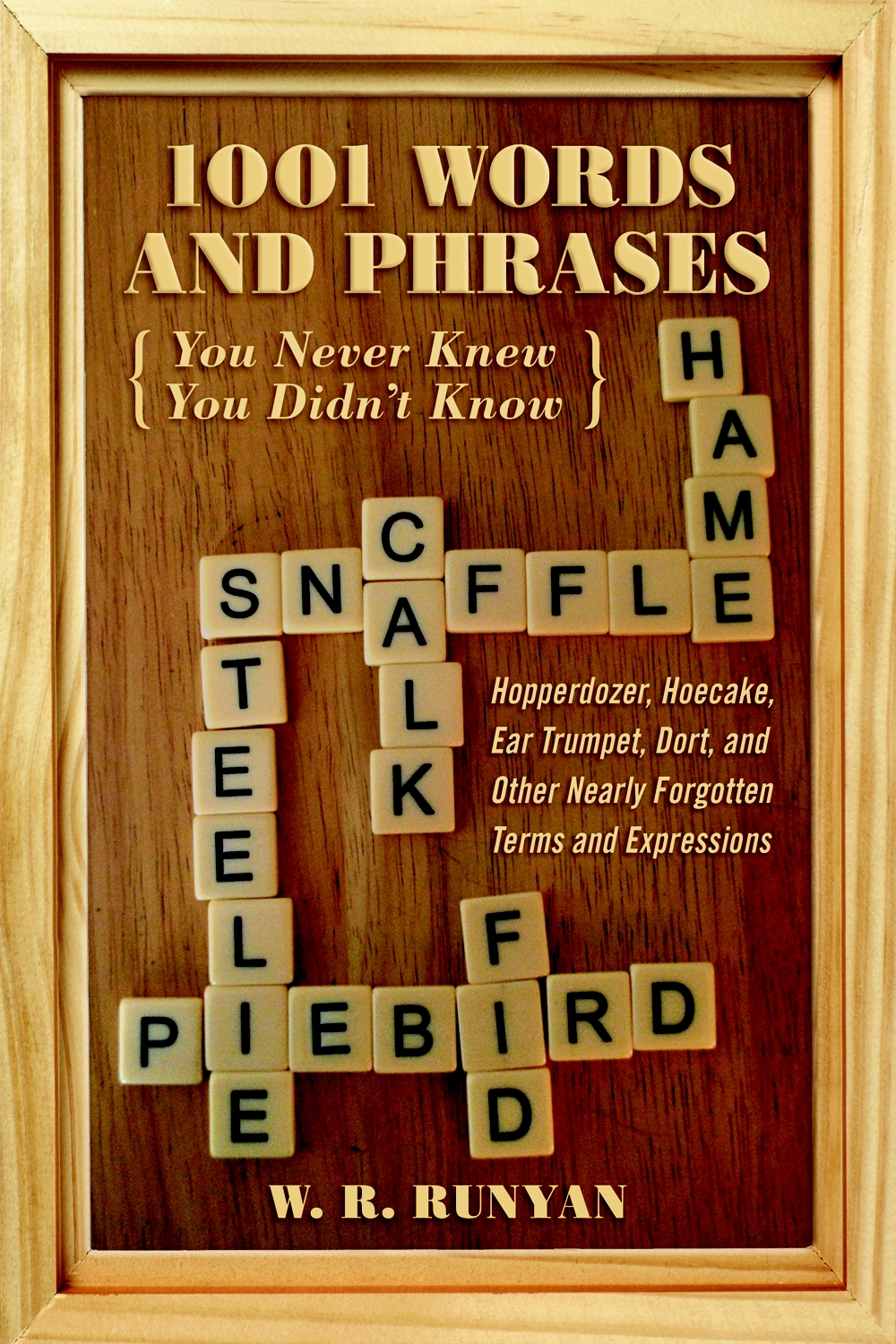W hile a large percentage of the words listed here are from my own remembrances, many of my acquaintances over the age of seventy were unmercifully quizzed about the items and words they used when growing up. They thus deserve, and have, my heartfelt thanks. Kenneth Bean, John Jeter, Symon Post, and Wayne Scott have been particularly helpful. My wife, Delma Runyan, did most of the line illustrations and helped with the proofing.
Appendix
ANVIL HEEL The opposite end of an anvil from the ANVIL HORN.
ANVIL HORN The end of an anvil that comes to a point and is shaped somewhat like a horn.
BARREL (1) A round vessel made of wood staves or of sheet metal. Barrels had a greater length than diameter and those of wood bulged in the middle. (2) A unit of volume. There are no worldwide standards of size, and the official values may change through time. U.S. wine barrel volume (1920s) was thirty-one gallons. The beer barrel volume was thirty-one and half gallons, and the British imperial beer barrel contained thirty-six gallons. At the end of the twentieth century, a barrel of oil was forty-two gallons and a barrel of water was thirty-one and a half gallons. In 1866, a gallon was listed in Sweets Ready Reckoner (U.S.) as containing 277.25 cubic inches. By 1920, a U.S. gallon contained 231 cubic inches and, at the beginning of the twenty-first century, still contained 231 cubic inches.
BIG SUMMER GRAPE A wild grape. See POST OAK GRAPE.
BITUMINOUS COAL Soft coal. It has a high sulfur content, is cheaper than hard coal, and was normally used for cooking and heating when coal rather than wood was burned.
BLACK JACK Common name for black oak.
BOLSTER Part of a wagon. It was a heavy wood beam just slightly shorter than an axle and one was placed between each axle, and the wagon box. There were two bolsters on a wagon. The rear bolster was directly over the rear axle and firmly fixed to it. The front axle had a wooden beam (sand board) bolted to the top of it. Above that was the front bolster, which was attached to the sand board and front axle with a single loose-fitting king pin. The single pin allowed the front axle to swivel (turn) under the bolster so that the wagon direction could be controlled by the front axle. The looseness, in principle, allowed the front axle to rock from side to side a small amount without affecting the way the box rode on the Running gear . Bolsters were usually made of oak or hickory, were about four feet long, and about four by five inches in cross section.
CAST IRON An alloy of carbon and iron containing over 1.7 percent carbon. However, carbon contents exceeding about six percent are too weak and brittle to be of much use. Cast iron has a low tensile strength and is quite brittle, but can be cheaply produced in intricate shapes. It was widely used in making such things as MOWING MACHINE frames, heavy lugged wheels, and large gears with teeth not subjected to high stress. Because of its brittleness and hardness, little machining was done on cast iron parts.
CHILLED IRON CAST IRON that is rapidly cooled to make it harder and more wear resistant.
CLYDESDALE A large workhorse that was developed in Scotland, probably from heavy black and dun stocks being imported into Great Britain by the eleventh century.
COMBINE An implement that first cuts off grain stalks, and then strips the grain from the stalk. The combine replaced the grain binder and the threshing machine combination. Early combines were the leviathans of the horse-powered world. Near the beginning of the twentieth century they were so large that up to forty horses were required to pull them, and the driver sat nearly twenty feet in the air.
COVERED BRIDGE A bridge with wooden trusses and a roof so that the trusses were protected from the weather.
CULTIPACKER They consisted of a series of iron wheels, each only a few inches wide, strung together side by side and were used to break up dirt clods in plowed fields.
CULTIVATING PLOW See CULTIVATOR.
CULTIVATION Cultivation is the plowing done after crops come up in order to control the weeds. For weeding, hand tools such as hoes were used for centuries before equipment suitable for being pulled by draft animals was developed. In fact, the term hoe was so ingrained that when first introduced, English Cultivating plows , and some American ones as well, were called Horse hoes . Unlike Turning plows , which turn over a ribbon of soil, grass, and weeds, cultivation plows are aimed more at stirring and scratching the top soil.
CULTIVATOR A plow intended to be used for CULTIVATION.
CUTTER BAR The part of a MOWING MACHINE that holds and guides the knife. It is also sometimes called a SICKLE BAR.
DEEP WELL PUMP A pump designed for pumping water from wells with water levels more than about twenty-five feet below the pump location. Such pumps are designed so that the pump cylinder is near the well water level and the water is forced to the surface rather than being sucked to it.
DISC Same as DISK.
DISK (1) A round thin steel plate, usually dished, that is sometimes used instead of a PLOW SHOVEL or MOLDBOARD. (2) To cultivate or HARROW with an implement that uses disks instead of teeth or shovels.
DISK HARROW The basic design used a series of slightly cupped metal DISKS mounted a few inches from each other on a common axle. Until the end of the horse-drawn disk, axle bearings were made of an oil-soaked tough wood such as maple. Without precision dust seals, such bearings lasted much better in harsh and gritty work conditions than the metallic varieties.
DISK PLOW A TURNING PLOW that uses heavy DISKS about twenty or twenty-four inches in diameter instead of a conventional MOLDBOARD.
DRAWING When blacksmithing, the stretching of a piece of iron to reduce its thickness.
DRILL See GRAIN DRILL.
FOX GRAPE Vitus labrusca . A wild grape particularly attractive to foxes, raccoons, skunks, and opossums. Also known as Northern muscadine and swamp grape.
FROG (1) Part of a TURNING PLOW that helps hold the landside and moldboard together. (2) The central part of a horses hoof.
FROST GRAPE A wild grape. See POSSUM GRAPE.
GARDEN PLOW A small, light-framed plow with a wheel on the front of the frame. This plow is designed to be pushed by hand and is used in gardening.
GIN Generally a cotton gin, which is a collection of machines to separate cotton fibers from cottonseed and then bale the fibers.
GRAIN DRILL An implement for planting small-grain seed. Several streams of seed are dropped down separate tubes into narrow individual furrows made by small shovels or discs just ahead of the seed tubes. The name drill originated from these streams of seed and an old meaning of the word drill, which was to trickle or dribble. Drill sizes varied from one-horse models through the two-horse size up to four- and six-horse models that could plant about twelve feet at a time. The drill dates back in crude form to at least 1600 A.D. and was introduced into the U.S. from England around 1840.
GUARD Part of a mowing machine SICKLE BAR.
GUINEA A fowl somewhat smaller than a chicken that was sometimes raised, along with chickens, to be eaten. Guinea eggs are smaller than those of chickens, and guineas are wilder than chickens.
HALF SECTION A rectangular block of land measuring one-half mile by one mile, and containing 320 acres. Unless just being used to indicate 320 acres, a half section was understood to be one-half of a section.












